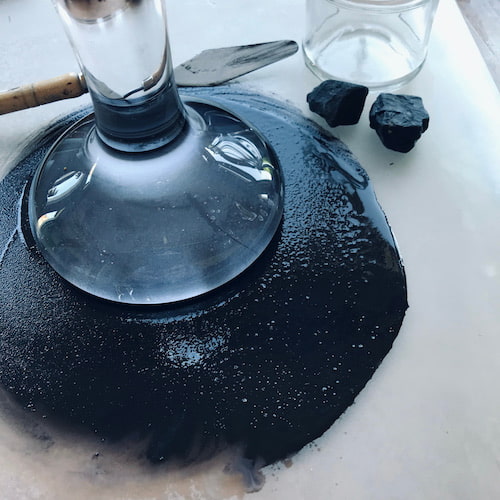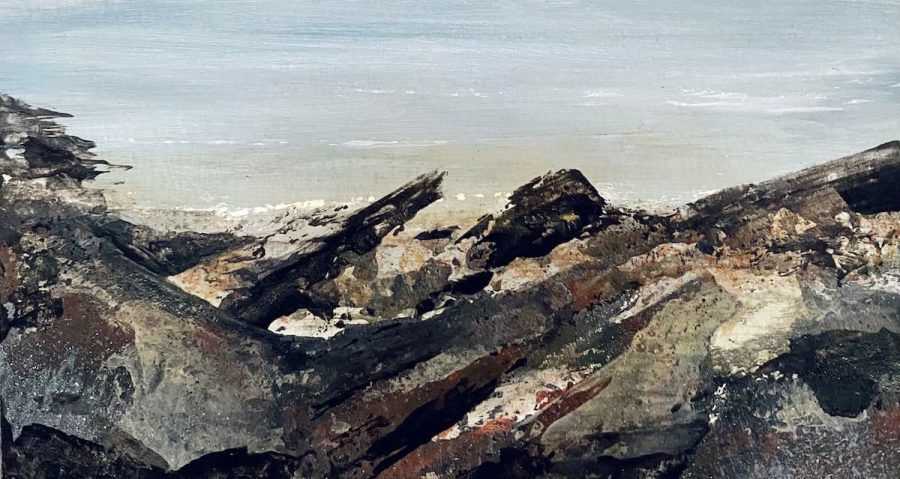TAKING COLOUR FROM THE LAND...
Over the last couple of years I’ve started to introduce handmade pigments from natural sources into my palette. I love this part of the process and it’s a feature I’ll be concentrating on more going forward.
I’m more inspired by stormy and angry looking clouds than blue skies so I take a lot of photos to use in the studio as reference rather than braving plein air – it’s not for me! I’m always cold. Using the rocks from the coastline has helped me keep a connection to the landscape back in my cosy warm studio.

I choose around 4 or 5 rocks from a location. I test the colour by rubbing them on a harder rock, a good pigment will act almost like a pastel.

After I’ve broken the rock down with a hammer, the next step is to use a mortar and pestle to grind it down till it resembles a fine sand texture.

I then use water and a process of levigation where the pigment separates from the larger sediment particles which sink to the bottom.

Finally, I dry it out to a powder form for storage. When I’m ready to paint, I then mix the powder with a binder using a palette knife and a glass muller.

When I’m using acrylics, I paint my seas and skies with paint from the tube before I move on to mixing up the rock pigment with an acrylic binder.

I also use the pigment to make watercolour pans using all natural ingredients. The binder is a mixture of gum arabic, honey and clove oil.

STUDIO NEWS
PLEASE SIGN UP TO MY MAILING LIST TO HEAR ABOUT NEW WORK AND PRINT RELEASES
THANK YOU!
You have successfully joined my list